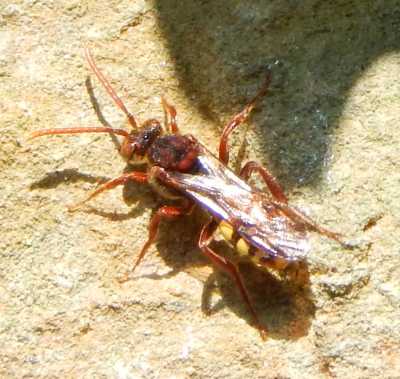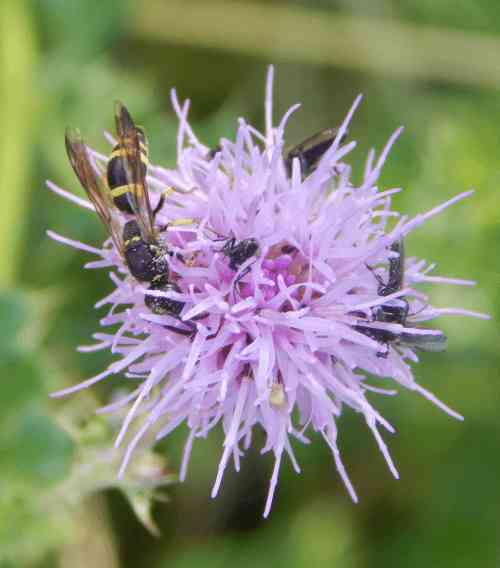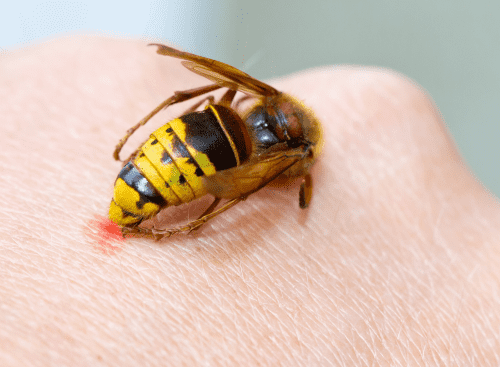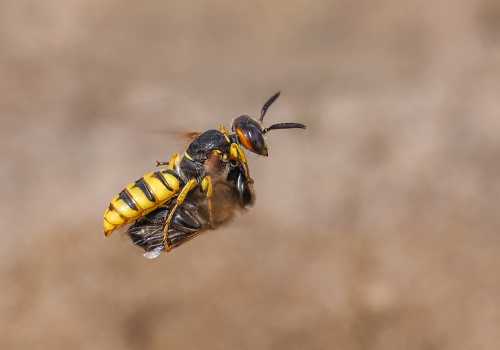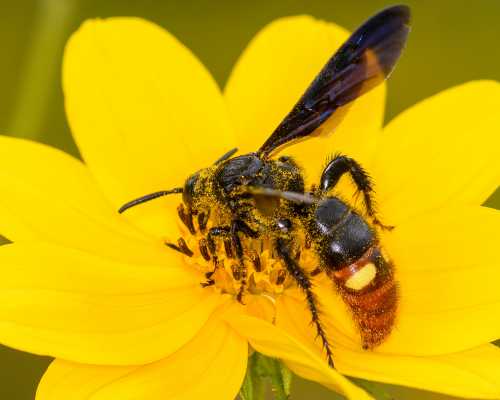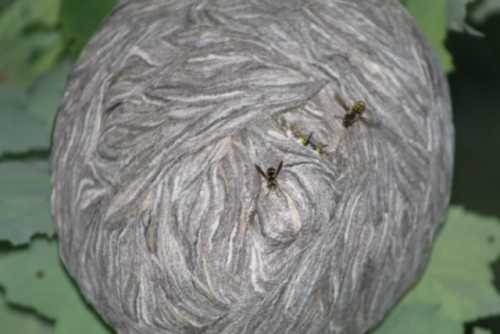Wasps Vs Bees
Wasps and bees have much in common, which is hardly a surprise given that bees are descended from wasps.
Wasps have been found in amber deposits (fossilized plant resin) that dates back millions of years1, and have been identified as the ancestor of the bees and wasps we see today.
Take a look at the links below for further information about differences, whether wasps hunt bees, whether bees are better than wasps, and more topics ...
... but first, an introduction!
Wasps Vs Bees - But What Are They?
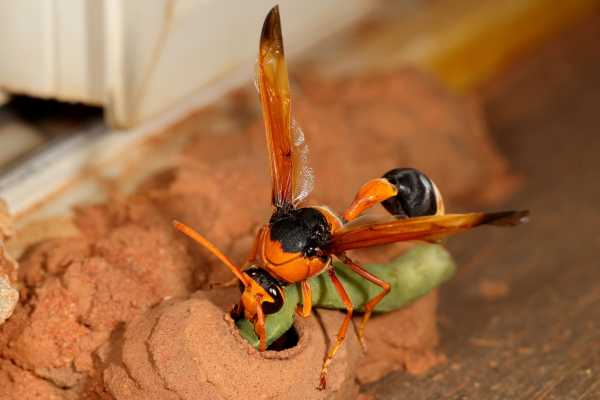 Orange Potter Wasp - female
Orange Potter Wasp - femaleEntomologist, Eric R. Eaton2, actually refers to bees as ‘hairy wasps’, (although some bees are not especially hairy anyway!).
Likewise, Falk3 points out that bees fall within the Aculeata along with ants, hunting wasps and a number of parasitic wasp species (such as sapygids, mutilids and chrysidids).
Most aculeates have a sting (which is a modified ovipositor) which can be used to inject venom, thus serving to help the insect defend itself, or (in the case of wasps) may be used in hunting.
Falk essentially agrees with Eaton, stating that bees are in fact, specialised wasps. Indeed he notes that some bee species are
more closely related to various wasp species, than they are to bee species.
It appears that bees are in fact, hunting wasps that switched from meat-eating to consuming pollen and nectar. Even here, the lines are sometimes blurred. Some bee species are known to eat meat, whilst some wasp species, notably of the genus Brachygasta (the honey wasps) share similar behaviours to honey bees.
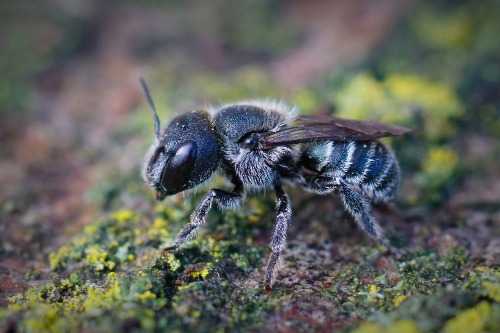 Blue mason bee - Osmia caerulescens -female
Blue mason bee - Osmia caerulescens -femaleWhy did bees and wasps evolve different paths?
Eaton states that the driving force behind the evolution of bees, was the evolution of flowers, and that floral diversity expanded when the wasps (that would evolve into bees) began feeding from the nectar in flowers, simultaneously pollinating the flower.
A cycle was thus created as the flowers in turn, increased in number, and evolved to offer greater quantities of available nectar.
As a result, some wasps switched from harvesting pollen as a source of protein for their offspring, instead of meat in the form of other invertebrates. They also evolved the means to carry pollen loads (such as scopa (pollen brush) or pollen baskets (corbiculae) – unless they are a species that regurgitate the pollen to provision their nests. These wasps are the bees we know of today.
In addition, the tongues of bees also modified to assist in the collection of nectar.
Meanwhile today, adult wasps still visit flowers to feed on the nectar, but you may also be familiar with those wasp species seeking out sweet foods (from soft drinks, to ripe plums).
You can learn more about the relationships between wasps and bees on the links below.
Are bees and wasps related?
Learn more about this fascinating topic and discover bees that look like wasps.
Bee vs Wasp vs Hornet Stings
Believe it or not, scientists subjected themselves to stings from a wide range of species, to find out which hurt most!
References
1. Spasojevic T, Wedmann S, Klopfstein S (2018) Seven remarkable new fossil species of parasitoid wasps (Hymenoptera, Ichneumonidae) from the Eocene Messel Pit. PLoS ONE 13(6): e0197477. https://doi.org/10.1371/journal.pone.0197477
1. Eric R. Heaton; Wasps – The Astonishing Diversity Of A Misunderstood Insect, Princeton University Press 2021.
2. Field Guide to Bees Of Great Britain And Ireland by Steven Falk, Bloomsbury 2015.
